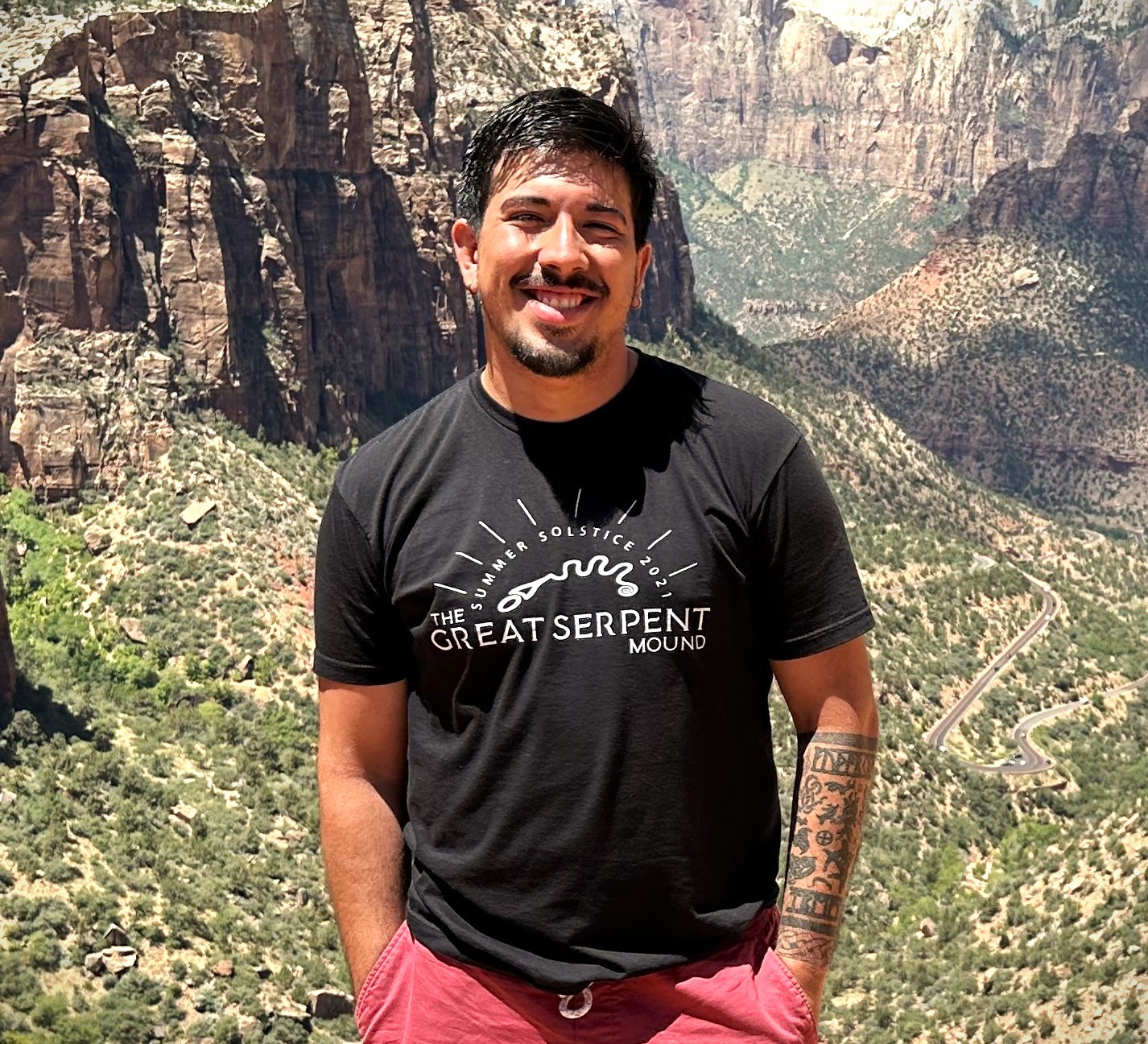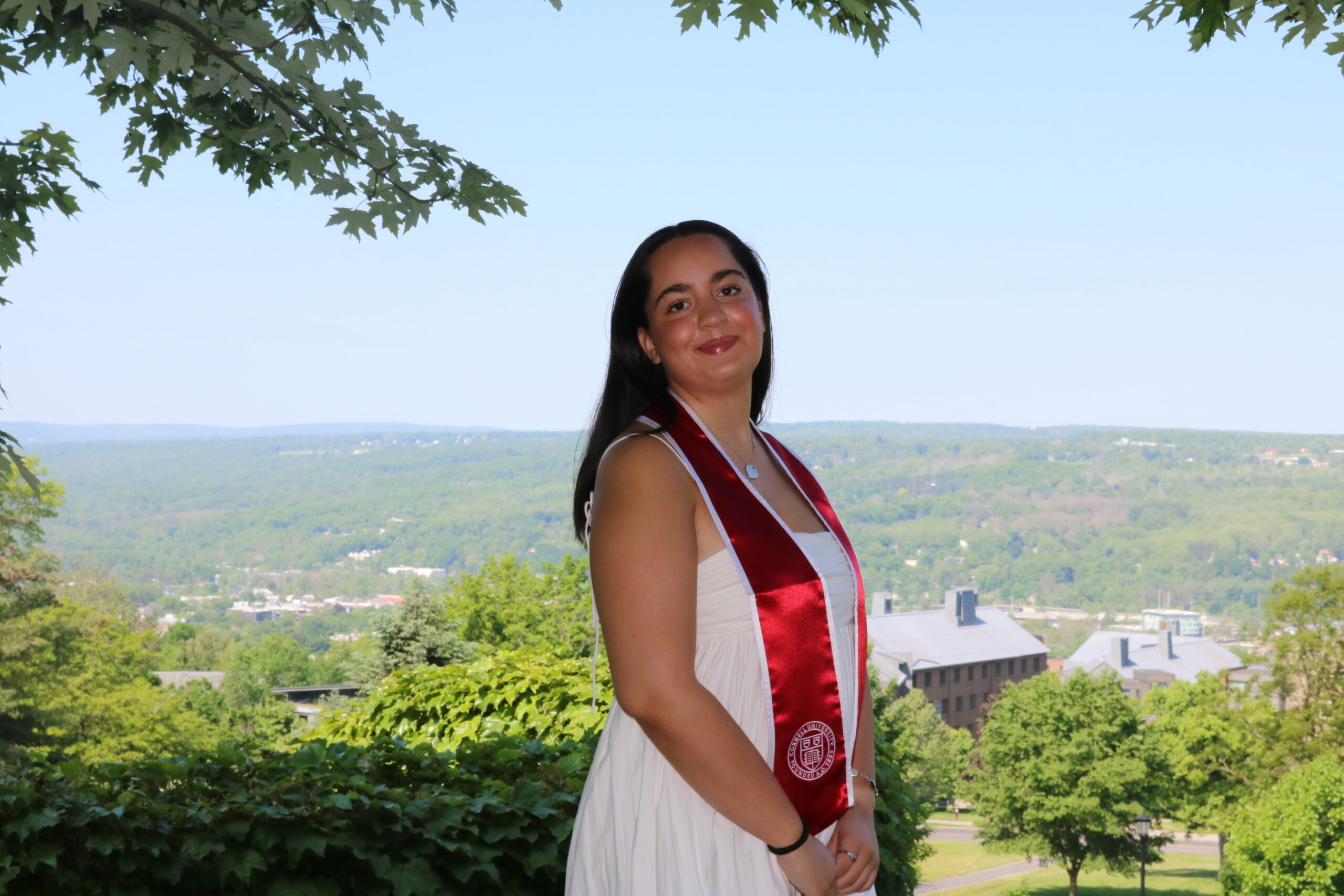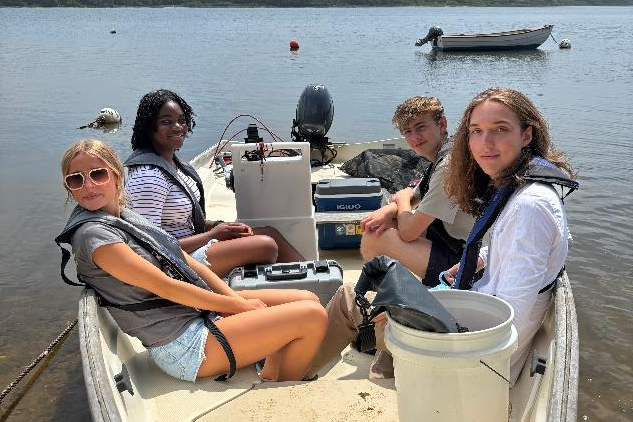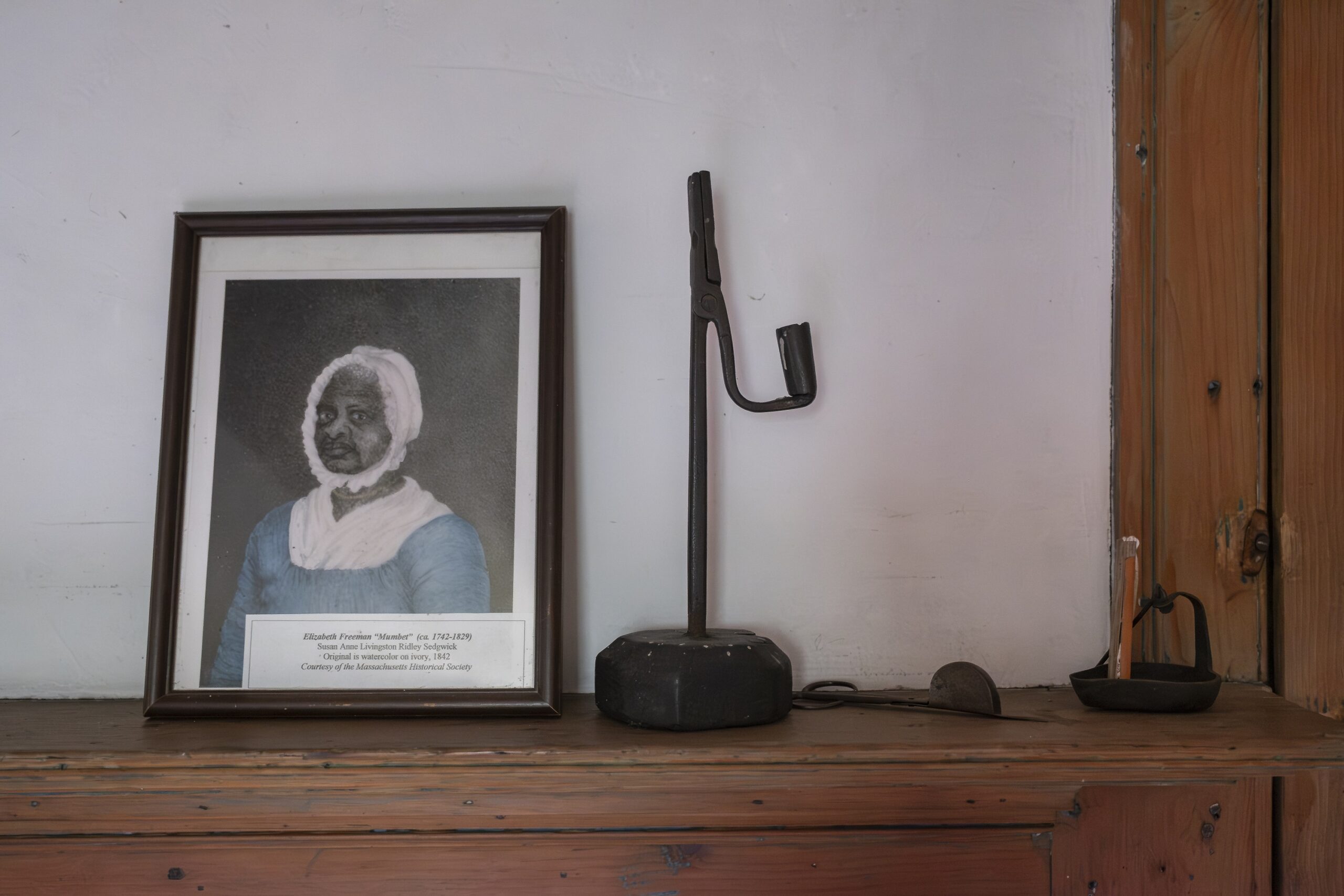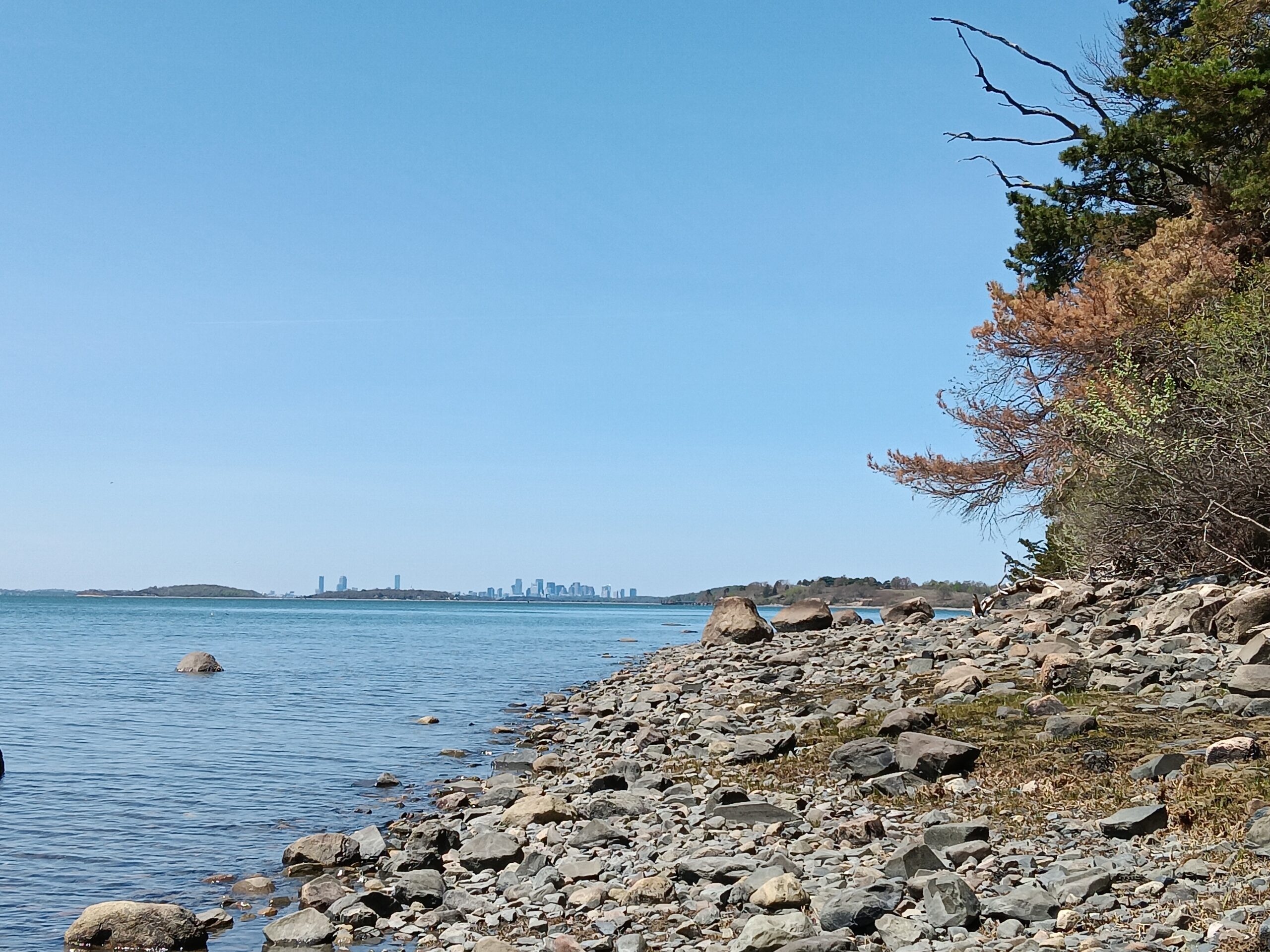
Looking toward the Boston skyline from World's End
I arrived in a state.
My toddler and infant sons hadn’t slept well the night before, and neither had I. There’d been a meltdown at daycare drop-off, and terrible traffic, and now the caffeine was hitting too hard, and the stress was spiking. Immediately after driving in, I shut off the engine and sat in the car alone for a little while, second-guessing myself. What if it’s all too much today? I worried. What if I can’t hold everything together? This string of “what ifs” was something I recognized as a hallmark of my anxiety—it was the voice of my own doubt, my own uncertainty.
Still, here I was, determined. I was going to visit World’s End despite already feeling like so much around me was ending. I hadn’t been here before, though I’d been told many times to go. When I first started working for The Trustees and told others about my job, the question I often received was, “But have you been to World’s End?” I had always answered “no”, but today I wanted to answer “yes”.
So I got out of the car and walked. I started out along the Weir River Road path, making my way slowly alongside Damde Meadows. The tide was out, and mud was thick in the marsh and along the shorelines. It was a very bright, early spring day, all flickering shade and sun-dapple. As I wended along the carriage trails between natural and man-made landscapes, between woods and fields, I felt as if light and shadow were shimmering everywhere. There was a strange kind of comfort in this—in both things being equally present, equally true.
Walking my personal drumlin
I wandered the drumlins to their outermost point—to World’s End proper—where I caught sight of the Boston skyline from the rocky shore. I sat looking at those blue-gray towers for a long while, feeling far away and nearby at the same time. I thought about the word “drumlin”, from the Irish for “little ridge” (droimnín). “Ridge” in English can be a noun meaning, among other things, “hill” or “crest”—like the crest of a wave—or a verb meaning “to conglomerate” or “to pile up”. Sitting at World’s End between land and sea, I thought about crests and valleys of earth and water, and about stones piling up and tumbling down on the shore. I thought about movement, change, and uncertainty. I thought about my own crests and valleys, and about my own heaps of stones that lately had been piling up.
So many of us have our heaviness, and here’s mine: I live with obsessive compulsive disorder. It’s not the kind you see in movies, with frequent handwashing or a consuming need for symmetry—although these are certainly some of the many forms OCD can take. Mine is what’s known in the OCD community as “pure O”; it’s purely mental and often invisible, taking the form of frequent intrusive thoughts and images (obsessions) that cause significant distress due to their content. Despite the label, those of us with pure O do find ourselves performing compulsions to reduce our own anxiety—such as mentally reassuring ourselves again and again, or constantly seeking reassurance through Google to try to ascertain whether our thoughts are actually “real”. These compulsions, in turn, reinforce the belief in our brains that the thoughts are real and dangerous, perpetuating a spiral of fear and shame, when in reality the opposite is true. Experiencing this cycle throughout recovery is a strange exercise in knowing the thoughts aren’t significant, but nonetheless feeling deeply as if they are. It’s an unmooring experience of being in two places at once.
OCD is a chronic mental health condition that can be—and at times has been, for me—debilitating. It can be managed, but not really cured; rather, it waxes and wanes throughout one’s lifetime, like a tide. Although defined as a disability by the Americans with Disabilities Act, it is only now beginning to be understood and properly treated. I’ve had it since childhood, but I wasn’t diagnosed until I was an adult—a common outcome for many who experience it.
Learning to live with OCD means learning to live with uncertainty—with everything building up and breaking down. It means learning to be with discomfort, to walk the rocky edges of your own feelings and to embrace those edges as much as you possibly can. It means seeing the simultaneity of everything while accepting that you will never grasp everything fully. Hiking the windswept paths and shorelines at World’s End, I couldn’t help but feel that I was rehearsing my own recovery. Here I was, walking a manicured path on a rugged coastline where nothing is static or certain, where land is built and broken down in a single instant. The beautiful contradictions inherent in places like this—in the fact that so little is constant or certain, and that this may be the only constancy we have—aren’t unlike the contradictions living in my mind: the fears that persist because of how deeply I love.
World’s End, not the end of the world
As a person living with OCD and as a mother of two, I often think about what it means to be and to raise empathetic, healthy human beings in a time when all the world seems to be teetering on an edge. When climate change, violence, injustice, and authoritarianism are real. When the land itself is shifting beneath our feet. At World’s End, I thought about literal worlds ending—about all that is beginning and ending around us—and I felt, in spite of all this, something like hope. I felt a way to still be with it all—to be with the joy and sadness, the wonder and fear. I felt a way to be open to all of it, and this was almost like a place I could choose to visit.
I still crave certainty. I still crave answers and thoughts and feelings that I can believe, that I can rest with. But I’m also learning, day after day, to accept my unknowing. I’m learning to live on my edges—to not just live with the mind I’ve been given, but to live with it, meaningfully. And I’m learning to lean on my village, to not do it alone. Even at World’s End, the sea and the city skyline—the presence and love and care of those all around us—are never far away.
I don’t know if I’ll ever not be in some kind of state. I might always be learning, instead. But maybe this isn’t the end of the world after all.
Maybe it’s a kind of living—a place to keep going.
